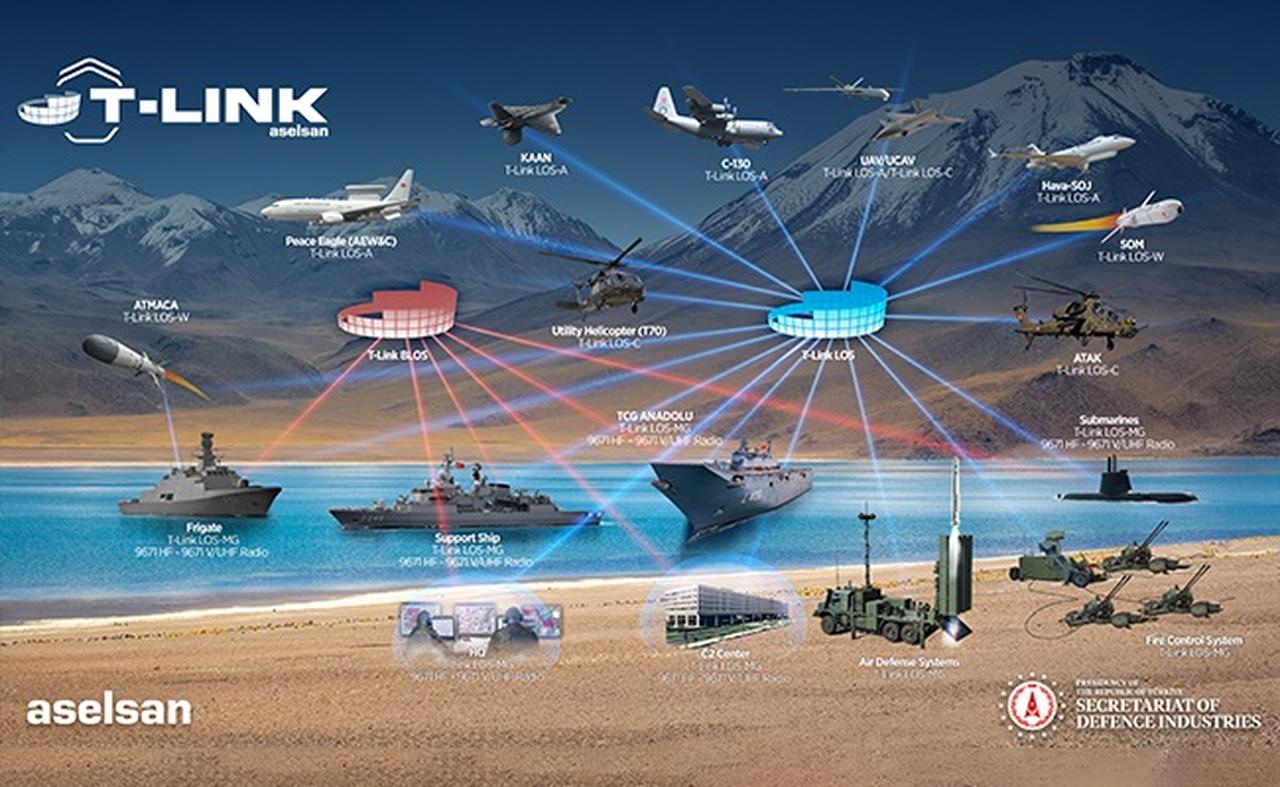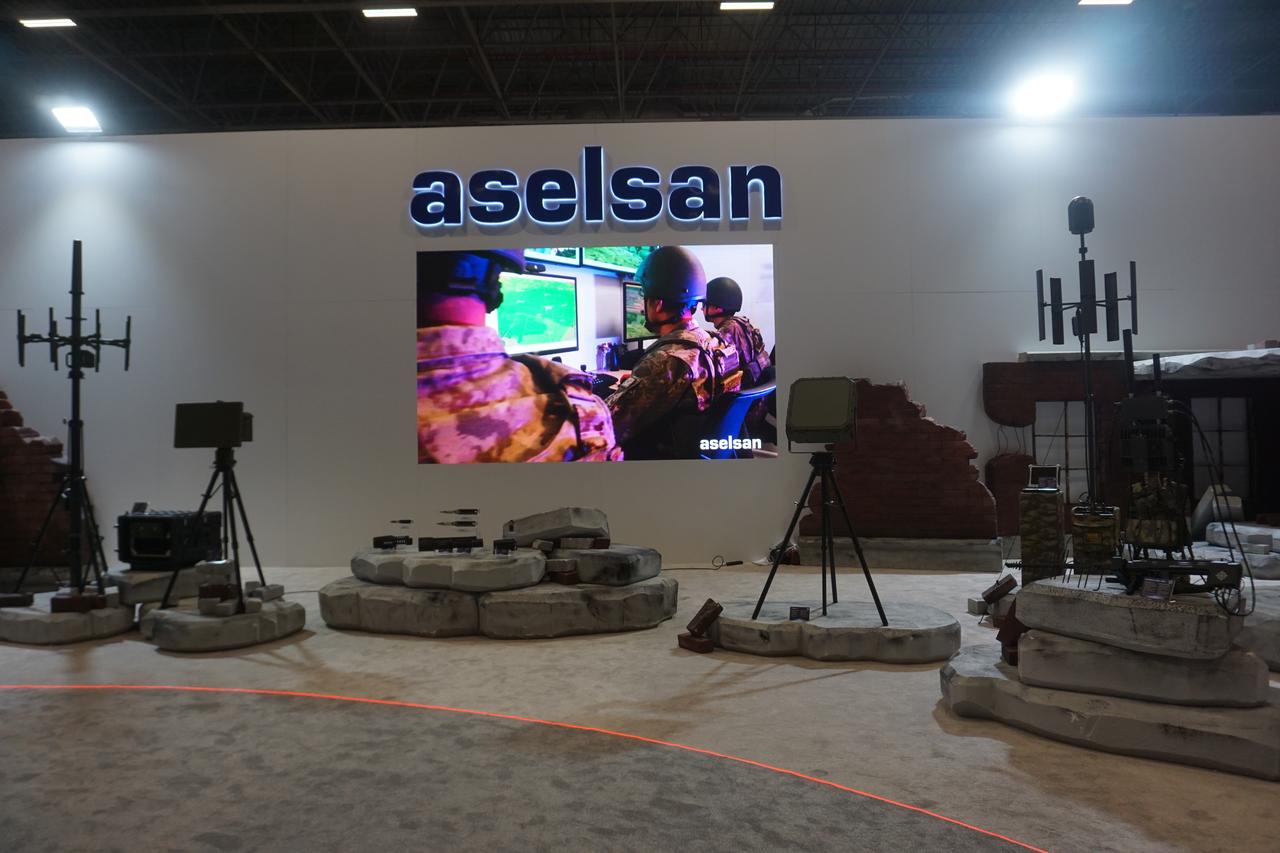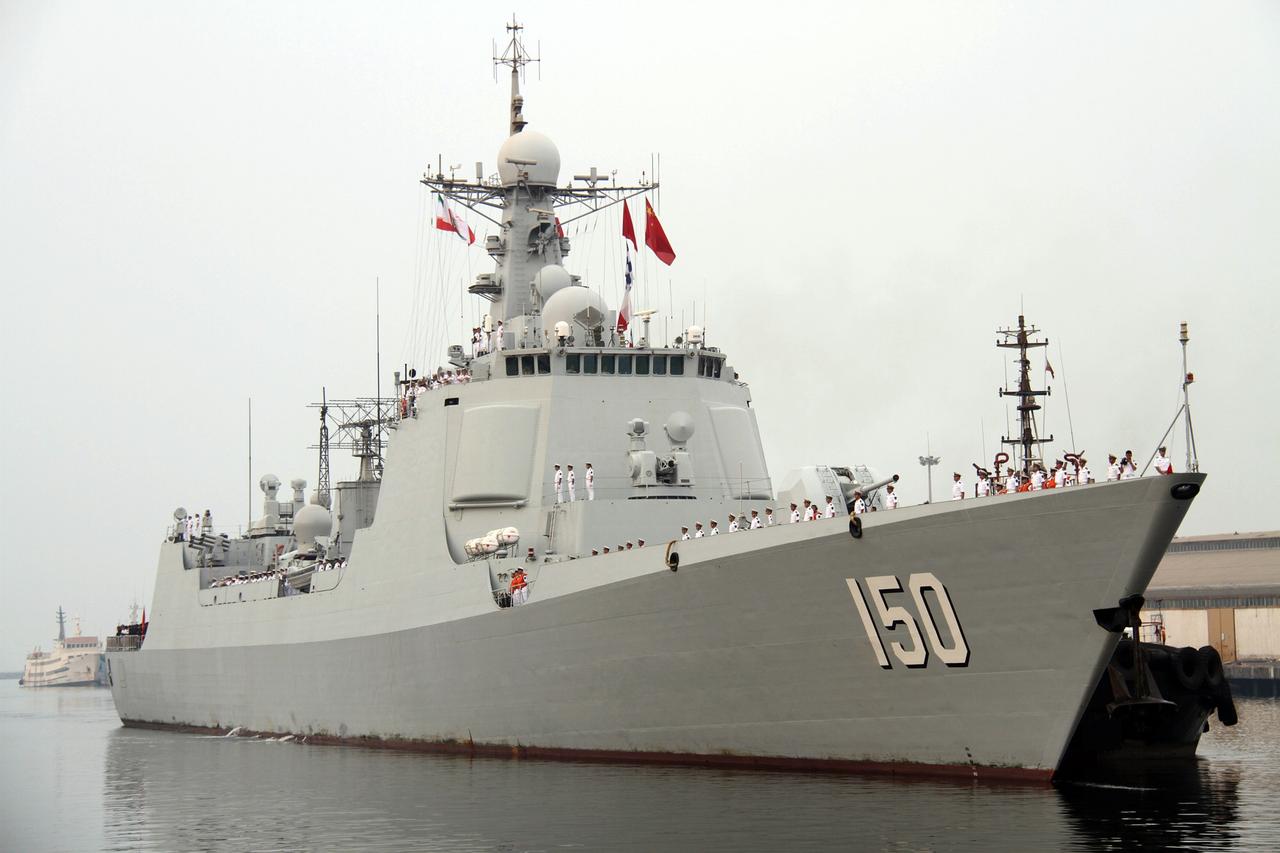
Türkiye's defense industry leader, Aselsan, introduced its T-Link tactical data link system and ASELFIR 600 electro-optical reconnaissance, surveillance and targeting System (EOTS) at the 17th International Defence Industry Fair (IDEF 2025), with a signing ceremony for serial production contracts.
The launch event at Istanbul Fair Center was attended by the Presidency of Defense Industries (SSB) head Haluk Gorgun, who noted the system's capabilities for modern solutions.
"Munitions are systems with their own computers. They are not just systems with explosives and seeker heads. Aselsan's products ensure fast and reliable transmission of all types of data," Gorgun commented.

The T-Link system consists of three main variants serving different platforms:
The terminal, part of Aselsan's T-Link Terminal Network System, offers significant advantages in size, weight and power consumption while ensuring secure and uninterrupted tactical information exchange between platforms and people. This communication can be between a munition and an airborne warning and control system aircraft (AWACS), or a frigate of the Turkish Naval Forces Command and a headquarters, or anything that can communicate via data.
For example, when Türkiye's domestically produced long-range air-to-air missiles like Gokhan or Gokbora are added to the inventory, fighter jets or maybe unmanned aerial vehicles (UAV) will launch Gokhan/Gokbora at targets detected by AWACS without even turning on their radars using these systems, and Türkiye already operates four AWACS aircraft.
"Network-based and encrypted communication, electronic warfare resistance and platform-specific adaptation, customizable messaging and interoperability, national ownership and maintenance," are among the key features of the T-Link system, according to Aselsan.
The terminal provides long-range communications through omnidirectional antennas, an embedded crypto module, high-speed tactical data transfer, relay capability and tactical information sharing for joint operations.
Operating in the L-Band frequency, the T-Link LOS-C terminal's RF output power can reach up to 90 watts. The system can function in harsh environmental conditions ranging from minus 40 degrees Celsius to 71°C and was developed in compliance with MIL STD 810 and MIL STD 461 standards.
Aselsan's modular design includes the T-Link Airborne, Marine/Ground and Weapon Terminals for seamless integration across platforms, plus ArtCom V/UHF Radio delivering voice and data communication capabilities over versatile frequency bands.

Military data links serve as critical advanced communication systems enabling real-time information exchange between weapon, reconnaissance and command-and-control systems. These systems enhance situational awareness and responsiveness across military units.
"Military data links are based on modern transmission technologies such as satellite communications, radio transmission, and wireless data transfer," allowing transmission of situation pictures, target coordinates and orders between military platforms and command posts.
The development comes as nations worldwide seek to establish national tactical data link capabilities to reduce dependence on foreign systems and ensure secure communications with national encryption.
Several countries have developed indigenous tactical data link systems to meet specific operational requirements:
South Africa's Link-Za: Developed by Thales Advanced Engineering for the South African National Defence Force starting in 1999, Link-Za provides national encryption and reduced dependence on international firms. However, interoperability challenges emerged between different platform types.
Sweden's TARAS: Developed in the 1990s using Rockwell Collins MR90 and FR90 terminals, the system aimed for Link 16 compatibility but was later discontinued when this proved unachievable.
South Korea's Link-K: Developed to reduce dependence on foreign tactical data link systems and enable joint operations across air, land and naval forces. The system supports radio, landline and satellite communications.
Brazil's Link BR2: Contracted in December 2012 with Mectron, the protocol enables near-real-time, high-capacity secure data sharing. Integration began in 2016 with F-5M fighters and A-29 Super Tucano aircraft.
China's JSIDLS: Replacing the HN-900 system, JSIDLS is a Link 16-like system completed in 2012. The TDMA-based system operates in the 960-1,215 MHz frequency band and is used on Type 052D destroyer platforms.

The development of tactical data links traces back to U.S. experiences during the Vietnam War, which revealed serious tactical communication challenges and the need for faster, higher-capacity digital systems resistant to jamming.
NATO developed several generations of data links:
"In the battlefield, all systems must work integrated with each other," Akyol said.
"T-Link was developed with national capabilities. With serial production starting, we have succeeded in developing a concept where we instantly transfer data rather than voice, where one aircraft's radar can fire another aircraft's missile," he concluded.
We can suggest the following as an example case: On March 1, 2020, two Su-24 aircraft belonging to the Syrian Arab Air Force were shot down by the Turkish Air Force.
F-16C Block 50M of the 152 Squadron was on a combat air patrol (CAP) mission in Turkish airspace and, via Link-16, was transmitted an aerial picture of the Su-24s, detected by the E-7T, also known as "Peace Eagle" early warning and command, flying in the operational area.